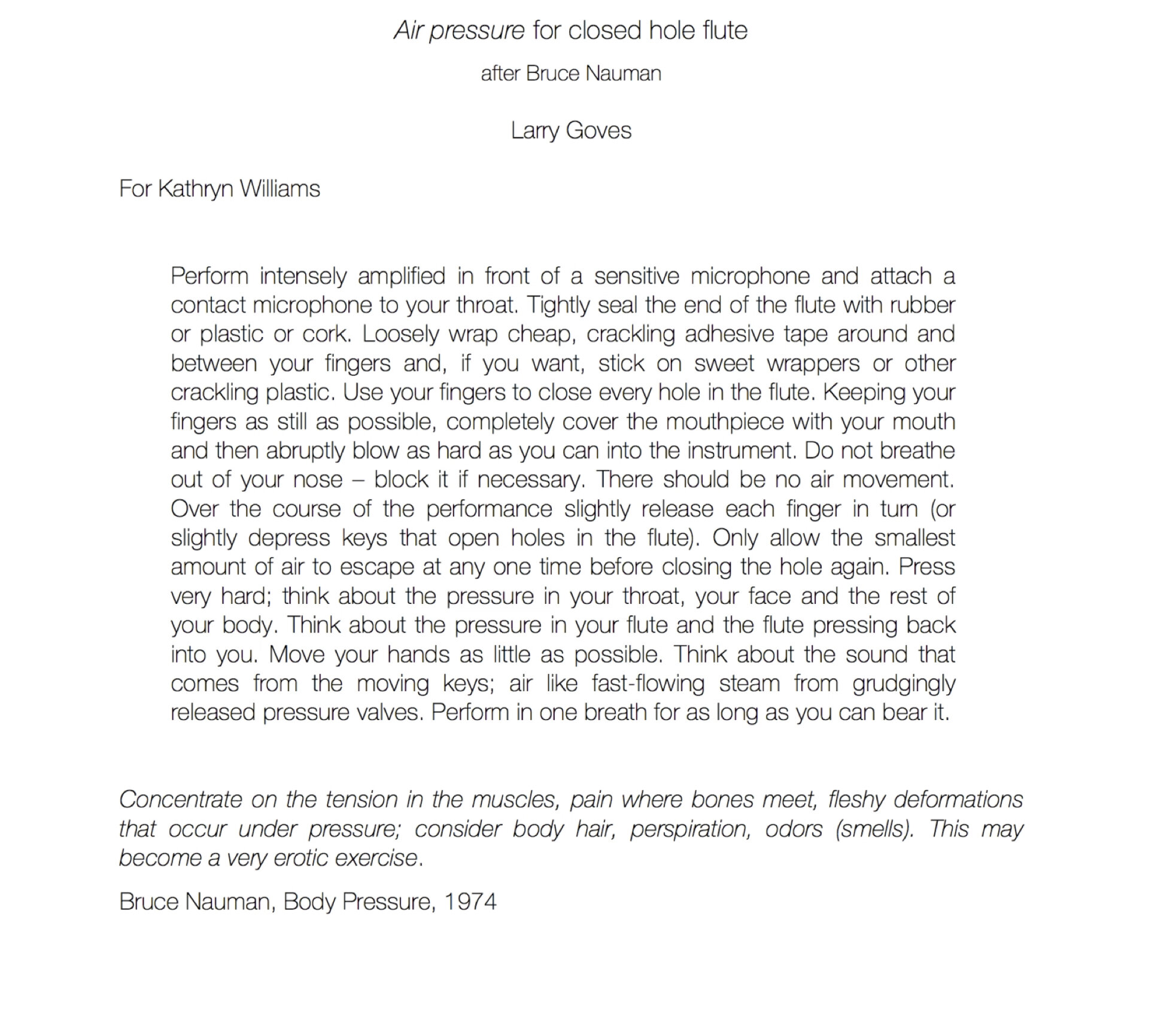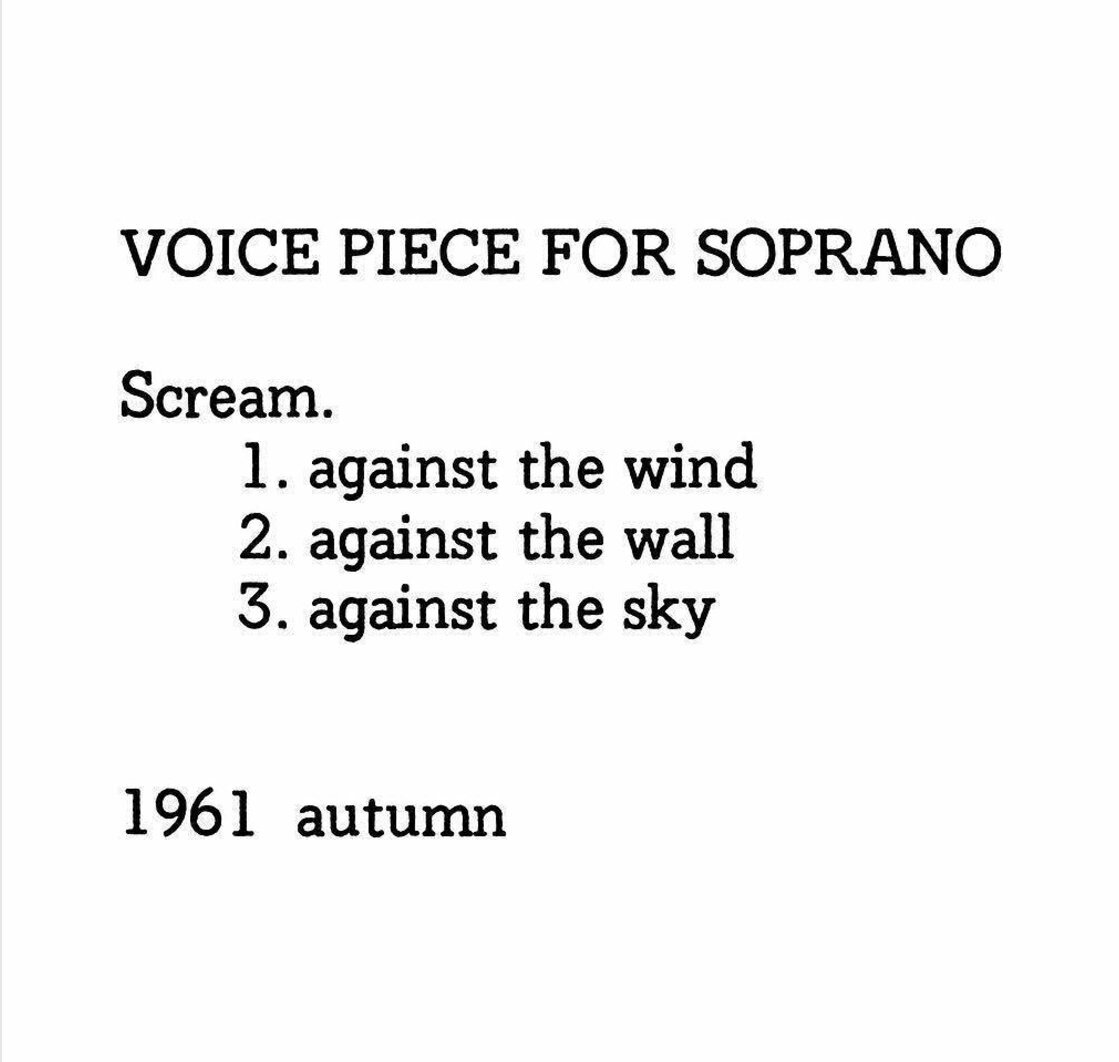Exploring Text Scores
Author: Blogger in Residence, Anna Disley-Simpson
Building upon a previous blog post of mine which investigated Graphic Scores, Text Scores can also be a great way of communicating instructions for how to perform a piece without necessarily utilising conventional notation.
It is easy to forget that reading and understanding musical notation to a high level is actually quite an esoteric practice. Deciding to compile a score made up of text alone is likely to automatically open up the demographic of performers who could potentially learn your piece. Whilst the piece may warrant a great deal of concentration and discipline, it may not necessarily require any specialist music knowledge at all. This could be an interesting limitation with which to challenge your compositional practice, providing scope for a different approach and therefore, potentially, some fresh ideas.
Text Scores can be excellent for both specified and non-specified ensembles, or even for a soloist or group that involves no conventional instrumental or vocal content at all. An example of this is Steve Reich’s piece, Pendulum Music, which requires a set of microphones suspended from the ceiling over a set of speakers, which the performers are required pull back and then release to set the mikes swinging back and forth. The resultant effect is a set of sounds created by the feedback which vary depending on the “gradually changing phase relations of the different mike pendulums”. The performers then sit down and observe the piece as part of the audience. You can see a video of a performance from 2014 here.
Pendulum Music (1968) for Microphones, Amplifiers, Speakers and Performers by Steve Reich.
Like Reich’s piece, Text Scores can end up being pleasingly playful, often displaying qualities that aren’t that different from a set of instructions for a game such as Twister, or Musical Chairs. Often, they can be for a flexible number of performers or participants, and the outcome is usually different each time, naturally incorporating elements of chance.
Conversely, though still deliciously playful, Larry Goves’ piece Air Pressure for flautist Kathryn Williams is incredibly detailed, specific, and highly conceptual. Again, it is instructional, and makes sense to be communicated through text rather than music notation. Another characteristic of Text Scores is often that they tend to explore and prioritise parameters beyond just pitch, rhythm and harmony, and instead focus on timbre, texture, and perhaps an overarching concept or narrative. This piece in particular is in response to Kathryn’s Coming Up For Air project, which consists of a collection of pieces submitted by various composers specifically to be performed within a single breath. More details here!
Air Pressure (2017) for flautist, Kathryn Williams, by Larry Goves
Lastly, Text Scores can provide a scope for the charmingly abstract and can even end up being quite poetic like the Text Scores of Pauline Oliveros or Yoko Ono’s book of instructions and drawings, Grapefruit, which even cross into the realms of both visual and performance art.
Voice Piece for Soprano (1961) from Yoko Ono’s Grapefruit
Perhaps there are some ideas here that you could incorporate into your own work, even just as a part of an otherwise conventionally notated score. After all, one could argue that the above examples are fundamentally extensions of the performance directions we already commonly know such as ‘legato’ or ‘allegro’…
Written by Anna Disley-Simpson





